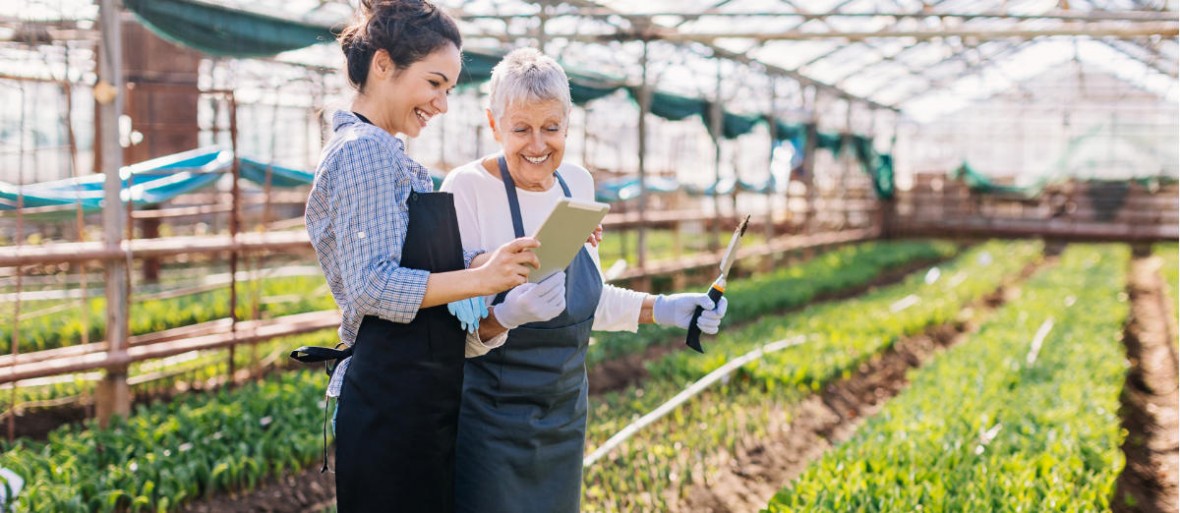It’s amazing to watch the conveyors shuttling our reusable packaging containers (RPCs) through warehouse automation, and to see how robotic layer pickers sort crates precisely. And automated systems function well with IFCO RPCs, because our containers perfectly meet the requirements.

Our RPCs have an interlocking design, so stacks don’t tilt. Because our range of containers guarantees the same footprint, they provide secure stacking of various produce types. Having standard sizes also offers a big advantage for the automatic order pickers, and the entire process becomes much more efficient.
So whenever I observe warehouse automation processes, I think to myself how easy order picking is with our RPCs. If you have various materials and mixed packaging, the crates often have different sizes. Human pickers are always thinking: "Which crate can I stack on which one so that they don’t slide into each other?" Different sizes and shapes present big challenges for automatic layer pickers as well.
This is why automatic high-bay warehouses and order picking systems work best with standard containers such as IFCO RPCs. And in the high-bay shelves, where crates are stacked several meters tall, the last thing you want is for a box to collapse, or give way under the weight in the stack.
During processing with warehouse automation, humans only handle the produce during the initial quality control check – we call this the ‘one touch’ advantage. As the crates move through the system, scanners read barcodes, noting the type of crate and its contents. Automatic conveyor lines and elevators transport the fresh produce to pallets or roll cages. The sales units – individually selected – are then moved to the outfeed for loading to trucks.
A case in point is our customer, SOK Corporation, Finland’s largest retailer, which operates one of the world’s first fully automated warehouses for fresh foods through its fully owned partner Inex Oy. Half of all of the groceries sold in the country go through this facility in Sipoo, near Helsinki! And you certainly need automation to handle such huge volumes. The warehouse will reach full capacity later this year. Each month, more than a million IFCO RPCs go through the logistics center.
Shape and stability of the crates are critical in automated system, a primary reason for choosing IFCO RPCs. "The customer wanted to avoid tilting in particular," says my colleague, Jonathan Andersson, IFCO Country Manager Finland, explaining why Inex Oy chose our crates for the automated process. "It was clear to them from the start that they need a high percentage of plastic crates."
There is another reason why stability is so important. Inside a warehouse, the humidity can reach 80 percent. "If crates absorb moisture and get soft, they are impossible to handle via automation," explains Mikko Kymäläinen, Logistics Manager at Inex Oy. Humidity does not affect the strength of IFCO RPCs. They are resistant to moisture, yet provide excellent ventilation.
When SOK/Inex Oy began running out of warehouse space a decade ago, and needed to expand capacity, they decided to turn to automation as a solution.
One factor that contributed to the successful launch in Sipoo was the close cooperation between SOK/Inex Oy and IFCO during design of the warehouse conveyors. Design engineers tested extensively how to transport the crates as efficiently as possible. The customer chose a specific model because it moved most smoothly along the conveyors.
Our RPCs certainly do move smoothly along on the conveyors – at one meter per second. I’m always impressed by the speed, accuracy, and precision of the layer picking processes in an automated warehouse. Everything is simply more efficient. With their standardized sizes and stable stacking, IFCO RPCs makes commissioning fruits and vegetables as easy as child’s play.
Stay up to date
Want the latest fresh food packaging industry knowledge delivered straight to your inbox? Subscribe to our newsletter and get the latest news, trends, articles and more!
